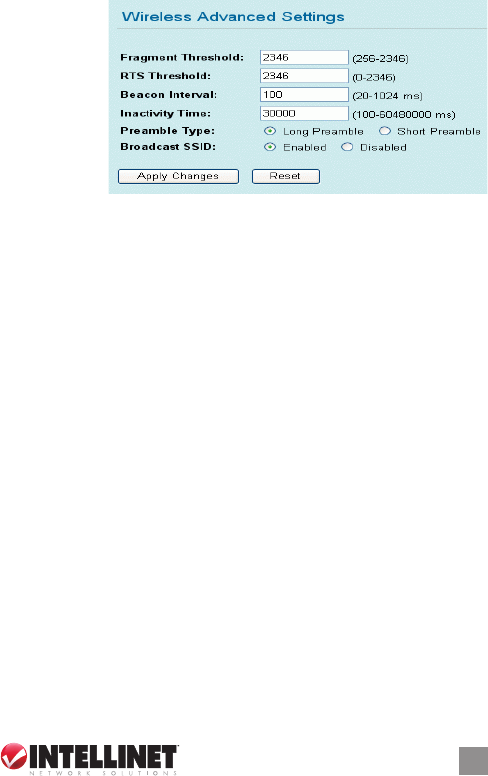
Click
“Setup” to
display the
Wireless
Advanced
Settings
screen and
options.
This is a mechanism for improving efciency when high
trafc ows along in the wireless network. If your 802.11g wireless
LAN adapter frequently transmits large les in the wireless network,
you can enter a new fragment threshold value to split the packet.
The value can be set from 256 to 2346; the default value is 2346.
This is a mechanism implemented to prevent the
“Hidden Node” problem, a situation in which two stations are within
range of the same access point but not within range of each other
(and are thus “hidden” from each other). When a station starts to send
data to the access point, it might not notice that the other station is
already using the wireless medium. When these two stations send
data at the same time, the transmissions might collide when arriving
simultaneously at the access point, with the collision most certainly
resulting in a loss of messages for both stations. When enabling RTS
Threshold on a suspect “hidden station,” this station and its access
point will use a request to send (RTS — also known as “ready to
send”), in which the station informs the access point that it is going
to transmit the data. Upon receipt, the access point will respond with
a clear to send (CTS) message to all stations within its range to notify
all other stations to defer transmission. It will also conrm to the
requesting station that the access point has reserved it for the
timeframe of the requested transmission. NOTE: If the “Hidden Node”
problem is an issue, specify the packet size: The RTS mechanism
will be activated if the data size exceeds the value you set. The default
value is 2346. CAUTION: Enabling RTS Threshold will cause
CONFIGURATION VIA THE WEB
11


















